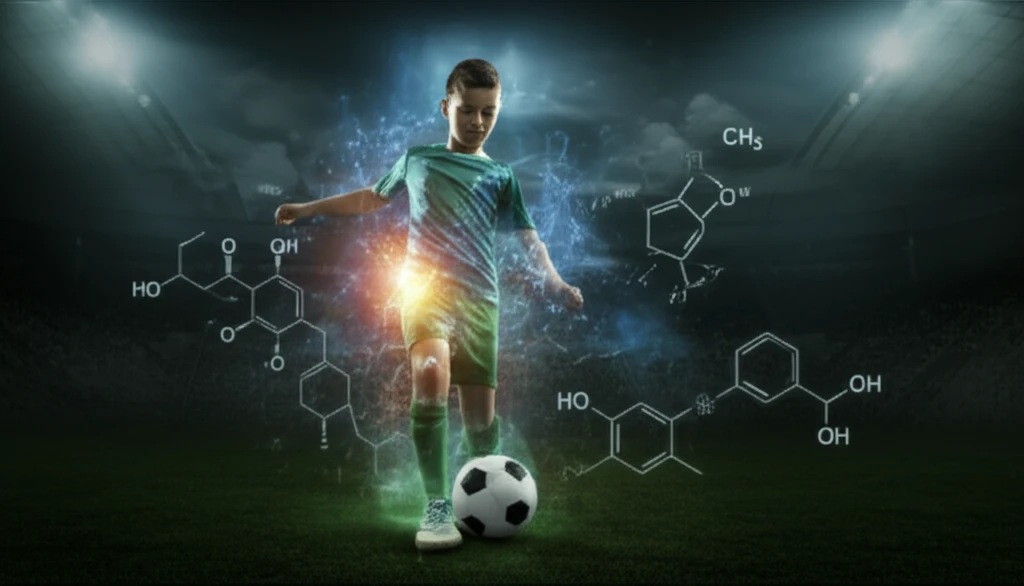
Unlock Your Soccer Potential: Can This Supplement Give You the Edge?
"Discover how 5-HMF and alpha-ketoglutaric acid might be the secret weapon for young soccer players during intense training, improving performance and reducing fatigue."
In the high-stakes world of competitive soccer, young athletes often face grueling training schedules designed to push their limits. These periods of intensified training, while crucial for development, can lead to fatigue, overreaching, and temporary dips in performance. The challenge lies in finding strategies to help these athletes not only endure but thrive under such demanding conditions.
The quest for effective ergogenic aids—substances that enhance athletic performance—is ongoing. Among the promising candidates are 5-hydroxymethylfurfural (5-HMF) and alpha-ketoglutaric acid (α-KG). Both compounds have been suggested to support favorable training outcomes, but their effectiveness in facilitating adaptations during intensified soccer training has remained largely unexplored. This is critical for helping soccer players deal with performance reduction.
Now, a recent study published in the Journal of Dietary Supplements sheds light on this very topic. Researchers investigated whether supplementing with 5-HMF and α-KG could help young soccer players maintain or even improve their performance during an in-season shock microcycle—a period of highly concentrated, intense training. The results offer intriguing insights for coaches, athletes, and anyone seeking to optimize training adaptations and minimize fatigue.
The Study: Unpacking the Science

To determine if 5-HMF and α-KG supplementation could improve physical fitness parameters, assessed by an incremental treadmill running test to exhaustion, a YYIR level 2 and a RSA test, researchers conducted a double-blind, placebo-controlled study involving seventeen young outfield soccer players (average age 14.7 years) from a professional soccer academy. This rigorous approach ensured that neither the players nor the researchers knew who was receiving the supplement versus the placebo.
- Treadmill test to exhaustion: This assessed maximal oxygen uptake (VO2max) and lactate turn points (LTP1 and LTP2).
- Yo-Yo Intermittent Recovery Level 2 (YYIR2) test: This measured the players' ability to perform repeated high-intensity runs with short recovery periods.
- Repeated Sprint Ability (RSA) test: This evaluated the players' ability to perform repeated sprints with minimal recovery.
The Takeaway: A Promising Boost, But Not a Game Changer
The study revealed that the intensified training program improved both YYIR2 performance and RSA in the young soccer players, regardless of whether they received the supplement or the placebo. This highlights the effectiveness of structured, high-intensity training for enhancing athletic abilities.
However, the researchers observed “likely positive effects” of the 5-HMF/α-KG supplement compared to the control group for changes in maximal running velocity and running velocity at lactate turn-point. This suggests that the supplement might offer a slight advantage in terms of exercise performance responses shortly after an intensified training regime. The researchers hypothesized it might be a result of a possible increased oxidative stress defense.
While supplementation with 5-HMF/α-KG appears promising for young soccer players, it’s essential to consider the findings within the study's limitations. The sample size was relatively small, and the intensified training was not individually tailored. Furthermore, the researchers recommend that future studies, encompassing a larger sample size and tailored training, are needed to solidify the understanding of 5-HMF and alpha-KG’s effects on fatigue and recovery.
